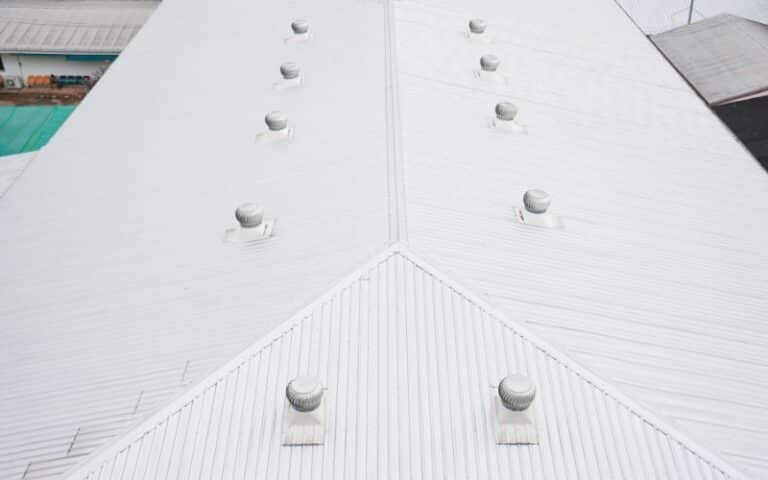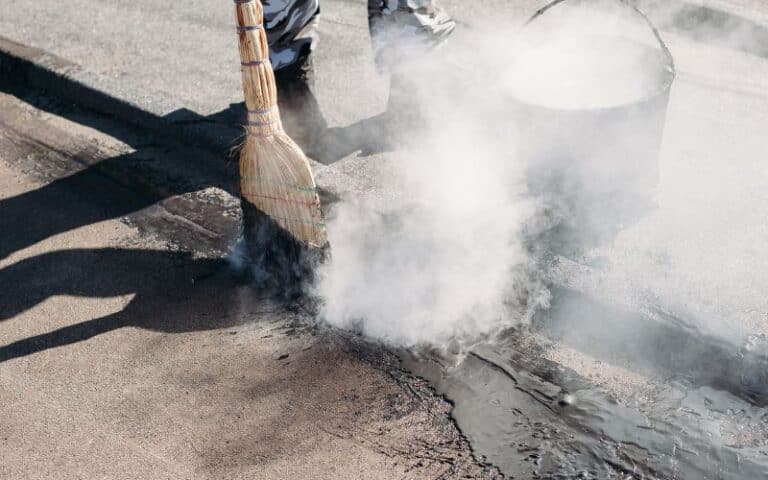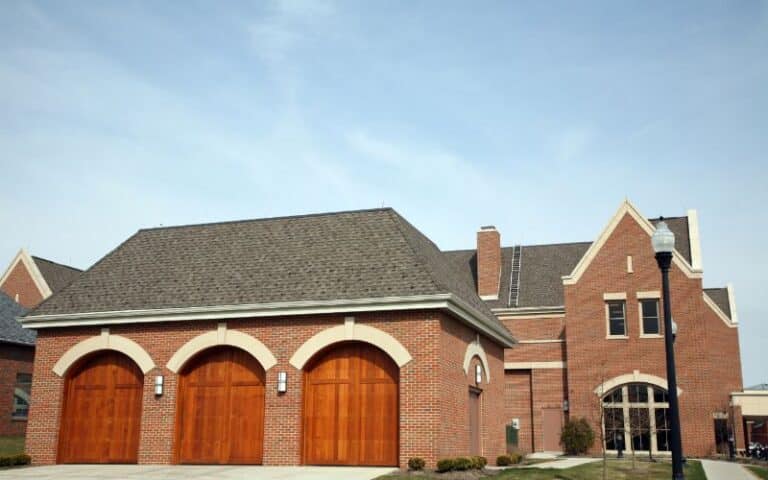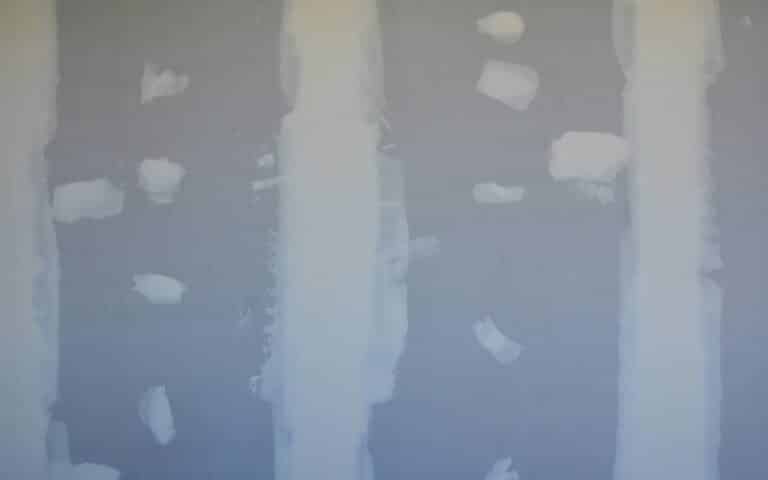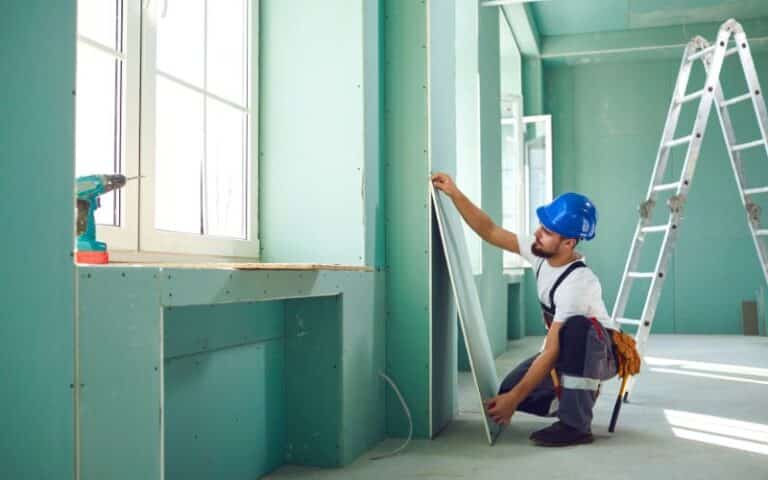Air ducts and ductworks are found on the roof of houses and sometimes in the office and even house storage rooms.
These ducts circulate both hot and cold air in the home and are mainly installed to aid the air distribution systems in the house.
Most modern homes leave the air ducts exposed while others do not.
Air ducts can be exposed in visible areas in the home, such as the ceiling, roof, and walls. However, they can be hidden or covered using false wood beams, wall chases, soffits or tray ceilings, and dark paint.
Ready for a Roofing Quiz?
Ready for a Drywall Quiz?
Does Exposed Ductwork Need To Be Insulated?
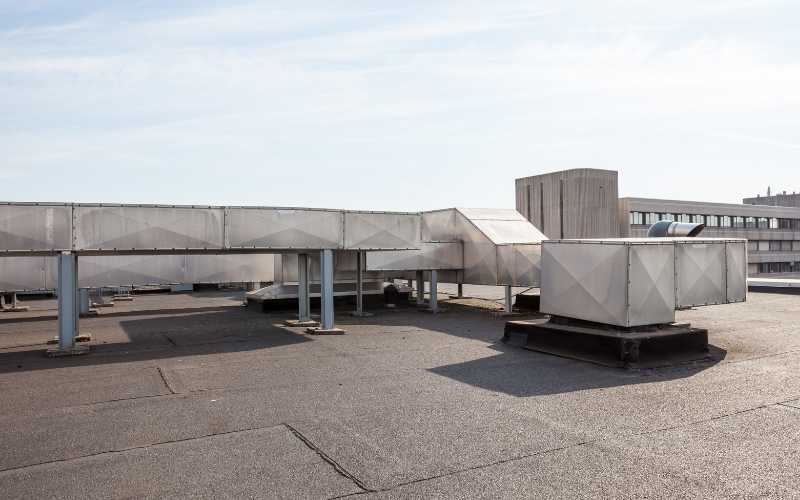
Yes, insulating your home’s ductwork has advantages such as low utility bills, subsided energy consumption, and a well-ventilated environment.
Nevertheless, apart from the benefits, there are some reasons why you must insulate ductwork.
- Ductwork insulation is important because it controls the air passing through the air distribution system. These duct systems contain the air and allow it to regulate and maintain the desired temperature.
Ductwork insulation also prevents air leakages that could result in avoidable energy losses. This puts pressure on the HVAC unit and causes it to work more.
Without insulating your ductwork, you could consistently lose 10 – 30% of the energy you would use to regulate your room’s temperature.
A well-insulated ductwork curbs energy waste, leaks, and temperature fluctuations and reduces the accumulation of condensed air.
- When cool air passes through hot ducts, they cause condensation in them. This condensation often results in mold and mildew growth due to moisture build-up in the duct systems. This further stresses the need for proper insulation to prevent condensation and allow the system to keep running.
- Sealing ducts before insulating them is recommended to ensure all leaks on the ductwork are sealed. An HVAC contractor is supposed to be your first resort in helping you seal all the areas in the duct which air runs through.
The appropriate material to be used is a Mastic gum. It is brushed on the duct and left for 24 hours to dry. The mastic is recommended because it does not shrink or get loose after some time.
- On the contrary, you should never use duct tape for ductworks because they either decompose, slack, or deteriorate after some time and lose their effectiveness in sealing the leaks.
In addition, duct-taped often gets sticky and gives a messy odor to the duct system. Aside from mastic, other tools are used for ductwork, such as sheet metal shear, screwdrivers, and channel locks.
In general, the most everyday ductwork insulation materials are fiberglass and Reflectix. The reflectix is the newest and most recommended insulation material.
It is also known as a standard duct wrap. Therefore, it is highly efficient and reliable, lightweight, and has foil faces on its exterior. There is also no risk of moisture build-up.
When installed, duct wraps are estimated to have an R-value of 5.6.
On the other hand, fiberglass is economical and less expensive to manage, easy to install, and easy to change or make a replacement.
Fortunately, it also serves as a noise absorber and requires frequent moisture and water absorption inspection.
Conclusively, air ducts are insulated to control noise, save energy, and stop condensation.
However, despite these advantages, a few other disadvantages of insulating exposed ductwork.
- If the HVAC unit is used for a long time without a replacement or servicing, heated air will be lost during heat transfer. The trapped air begins to escape to the ceiling in no time, thereby resulting in an inefficient air distribution system.
- There is also a risk of incurring high energy charges, especially in regions or areas where the weather condition is hot and the air conditioning system is frequently used. In addition, heat transfer in the attic is often lost, resulting in costly system maintenance in the long run.
How Do You Cover Exposed Ductwork?
Most homeowners find exposed air ducts unattractive and old-fashioned, while others do not. Therefore, leaving your ductworks exposed has no disadvantage.
However, you may have old ducts that are not so pretty anymore, and you would like to change them or cover them up. In this article, I will explain the various methods used to cover exposed ductworks.
Make Use Of Wall Chase
Air ducts that run horizontally down a wall are often covered by simply using wall chase. First, the air ducts are framed and attached to the walls using two-by-four wood planks.
The next thing to do is add drywall and coat it with matching paint color to make the chase blend in with the wall. This first step is relatively easy, even if you are not so experienced in handling roofing air ducts.
Make Use Of Soffits Or Tray Ceiling
This method works for air ducts installed vertically along the walls right up to the ceiling. The air ducts are covered by a box light unit known as the soffit. The soffit is then framed using plywood or dry wood.
Nonetheless, if you have multiple layers of duct running through your wall, you should use a tray ceiling instead. The tray ceiling conveniently hides the ductworks and has a unique modern look.
Suspended Ceiling
This method is primarily found in stores and offices. It is a method where a metal grid is suspended in the ceiling using metal wires. The tiles on the roof cover the ducts by sitting between the metal grids.
They are easy to dismount especially when cleaning air ducts.
Use Of Paint
If you want to blend or cover your air ducts, using paint is effective. Dark paints often fit well, especially when you live in a modern house. However, you can also use light paint.
Furthermore, using paint for your duct is often chosen when homeowners do not feel comfortable adding soffit or suspended ceilings on their roofs.
Use Of False Wood Beams
Many homeowners have gone with this method of installing false wood beams to cover the exposed ductwork. Sadly, false wood beams are made from heavy plastic and painted to appear like natural wood.
These beans are hollowed so that you can adequately fix them on ductwork. These false wood beams give your room a touch of class and creativity.
There is no best choice method for covering or hiding exposed air ducts. However, there are a variety of ways you can choose from.
Besides, adding a little bit of creativity and investing time to cover up your exposed ductworks can give your home a classy touch.
Conclusion
This article discussed the pros and cons of ductwork being exposed, the importance of insulating exposed ductworks, and how to cover these exposed ductworks.
So, one could always tell that several benefits accompany insulated air ducts.


